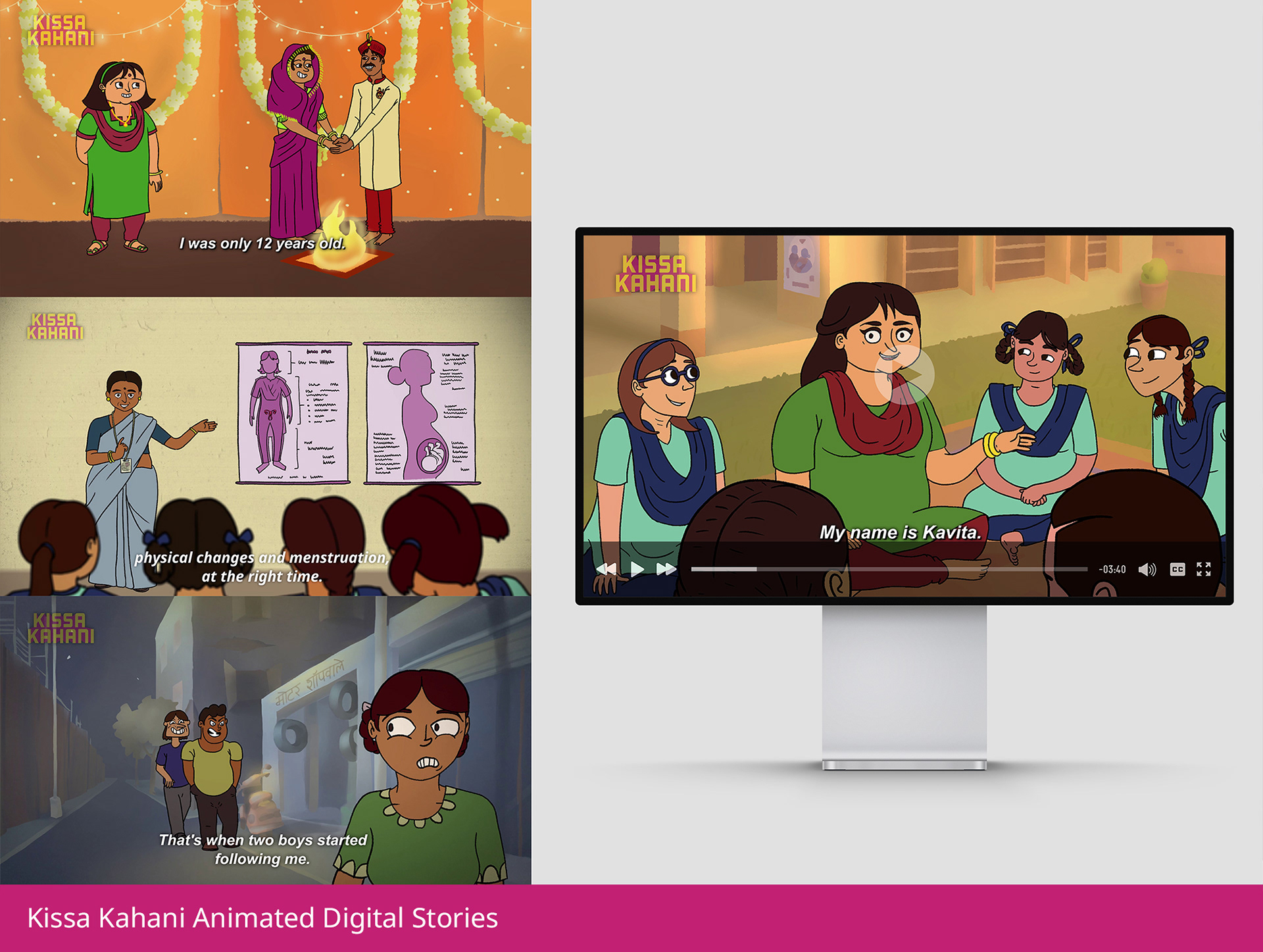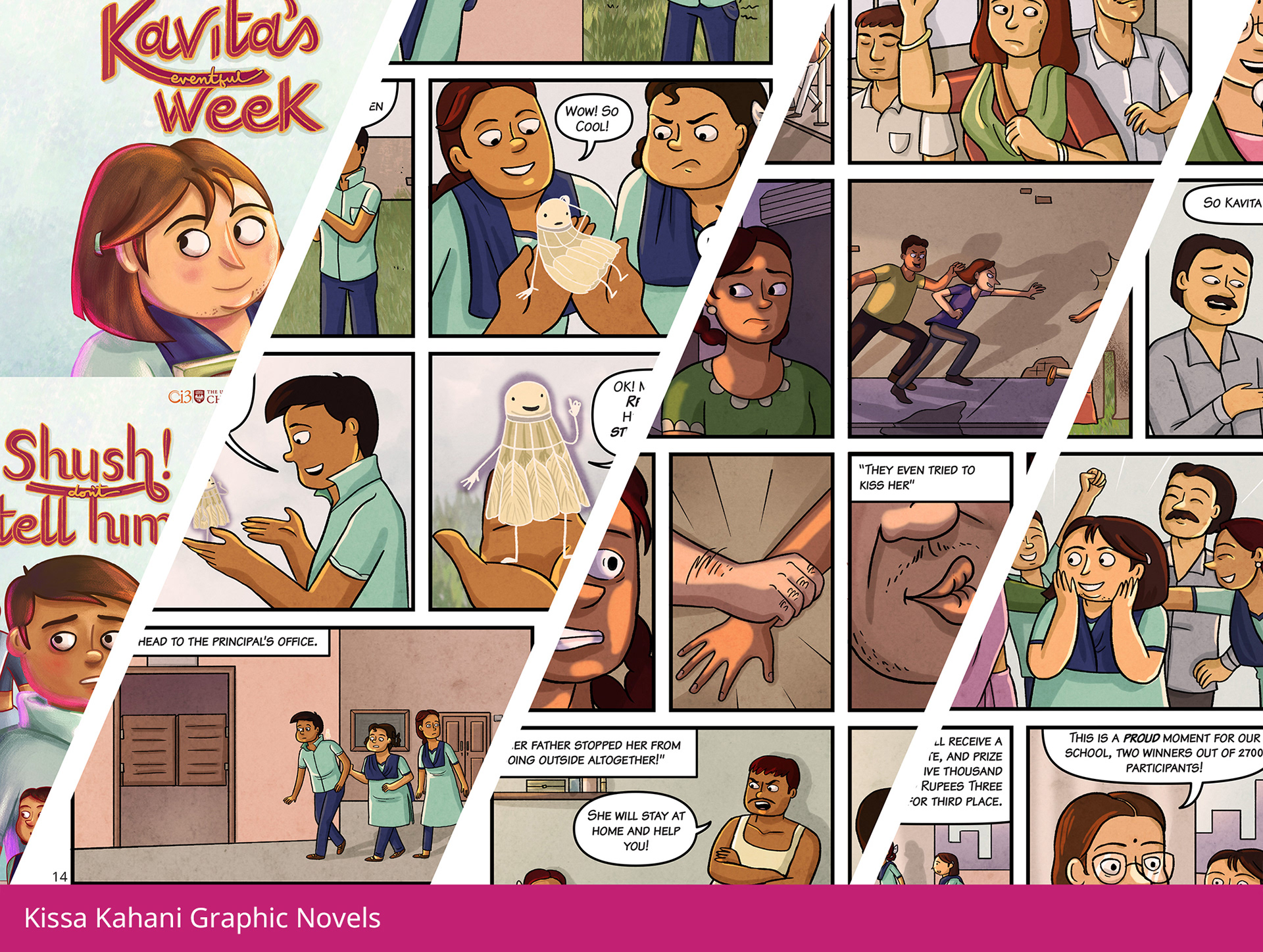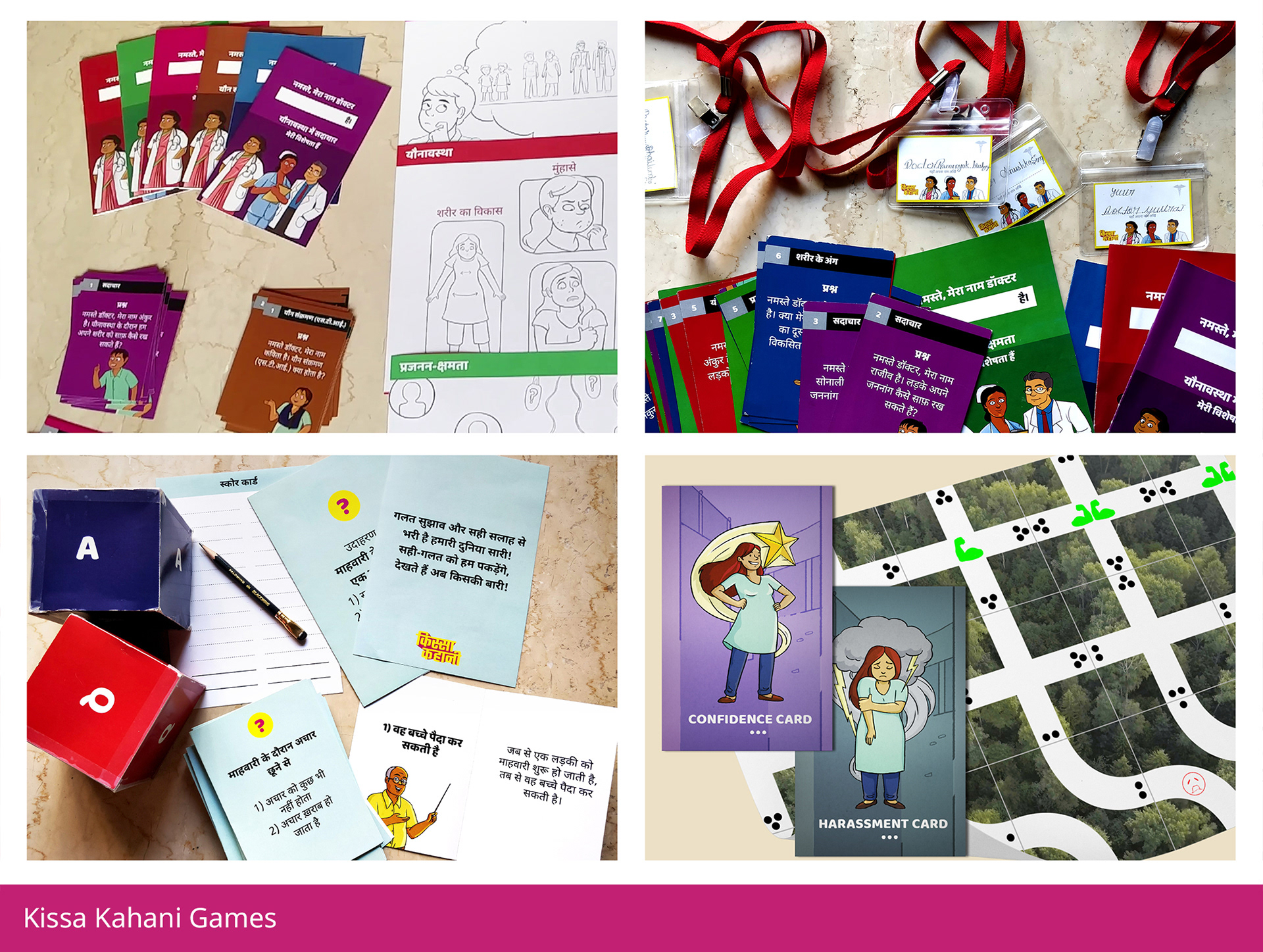Update: Kissa Kahani is the Runner up for the Design Education initiative at Core77 Design Awards 2020!
View the honoree page here!
View the honoree page here!
Discussing sexual and reproductive health can be awkward for most young people, but in India, there are almost no discussions at all. Young people in India have limited access to sexual and reproductive health information and services, which makes them vulnerable to multiple health conditions with lifelong consequences.
Kissa Kahani is a uniquely designed, evidence-based intervention that provides information about sexual and reproductive health to Indian adolescents through storytelling, multimedia, and innovative research.
Kissa Kahani is a uniquely designed, evidence-based intervention that provides information about sexual and reproductive health to Indian adolescents through storytelling, multimedia, and innovative research.
Created by Ci3 (Center for Interdisciplinary Inquiry and Innovation) at the University of Chicago, with Ramya Ramakrishnan Design and Curriculum developers Stratcomm Consulting, Kissa Kahani educates adolescents ages 12 to 14 about sexual and reproductive health in schools across India.
Core Design Team:
Ramya Ramakrishnan - Concept, Direction & Art
Jemma Jose - Character Design & Art
Aurcoe - Animation
Shruti Prabhu - Branding & Graphic Design
Kissa Kahani shifts how sexual and reproductive health information is delivered to Indian adolescents.
Combining the power of a traditional curriculum with animated stories, graphic novels, and games, Kissa Kahani teaches youth about three core themes. These are Menstruation, Family planning and Sexual Harassment.
A Transmedia Intervention Design
A transmedia design is one that creates an immersive experience across different media, in our case those of Graphic novels, Animated stories and Games.
Drawing on the interviews conducted with young people by the research team in the first phase of the project, we created characters who are relatable to younger adolescents.
Young Kissa Kahani characters face issues of gender discrimination, societal pressures, and lack of parental support, but they move with confidence, seeking out help and information, advocating for themselves, and identifying solutions to problems. They are not afraid to ask questions to their parents and teachers. Above all, they seek accurate information.
The characters appear in distinct roles, connecting to core intervention themes — menstruation; menstrual hygiene practices; increasing public safety of girls; and knowledge about sexual and reproductive health and family planning. They cross over between media, appearing from animated digital stories, to the graphic novels, to the games.
These 3 core design elements were all field tested extensively over five rounds of low-fidelity prototype testing in Indian government schools to evaluate the intervention's flow and structure, adolescents' comprehension of the content, and youth's overall comfort using these new media.
Over the duration of a year and a half, we worked closely with the research team as well as on-ground community partners to understand the needs of the intervention. We created three animated digital stories, three graphic novels, and three games, one for each of the core themes of the intervention.
The branding, identity design and visual style pull all the elements of the intervention together.
These will work with the wrap-around curriculum as a facilitator-led intervention for adolescents in Indian government schools, between the ages of 12-14.
Over the next year, Kissa Kahani will be implemented in nearly 100 government schools, impacting over 3000 students, with the aim to eventually reach every young person in India.





More details on the individual design elements coming soon!
